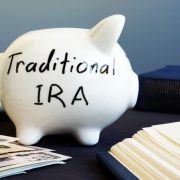What Are the Reasons Investors Use Self-Directed Traditional IRAs?
The Traditional IRA is the oldest retirement account around. For many investors, that means that they have moved on to other account types they find more beneficial. But why do so many people still stick with Self-Directed Traditional IRAs? We cannot tell you what’s best for your situation, but we can highlight the benefits associated with an account of this type. Here is what you will need to know.
The Main Benefits of Self-Directed Traditional IRAs
Although the Traditional IRA is the oldest account type around, it does not mean it is obsolete. One reason it is still in existence is that it offers investors options that they might not have if they were to use other strategies. Let us look at some of the key benefits that attract investors to Self-Directed Traditional IRAs:
- Deductions. One of the most obvious benefits of using a Self-Directed Traditional IRA is that it allows you to take tax deductions on your contributions now. This is especially beneficial for people already in a high tax bracket, who are not as sure that they will be in that same tax bracket when it comes time for retirement.
- Self-Direction possibilities. With a Self-Directed Traditional IRA, you are able to invest in a wide range of asset classes as you see fit. That can include real estate, precious metals, private company stock, tax liens, and more. As a Self-Directed investor, you will be responsible for picking and choosing in a way that keeps you square with the current retirement rules. But with a Self-Directed IRA administration firm in your corner, you will also be able to stay on top of paperwork and administrative needs with ease.
- An alternative to the Roth IRA. The Roth IRA is great—most people agree on that. But not everyone is eligible to use one. In that case, you may choose a Traditional IRA instead. They have similar contribution limits, which means you can immediately start putting money away toward retirement even if you are not able to use a Roth IRA.
- Additional contributions over earnings limits. If your income is above the earnings limit for a Traditional IRA tax-deductible contribution, you do not have to worry about not being able to contribute. You can still put money aside in a Traditional IRA. The income limits apply to tax-deductible contributions, which means that some of the benefits may not be applicable if you earn above a certain amount.
Why Self-Direction?
When people first encounter the idea of self-direction, it can first seem a bit untethered to what they are used to. For many people, using an IRA through an employer is the norm. And many people get used to the idea that their choices may be limited by the platform they use.
With a Self-Directed Traditional IRA, your options expand. You can invest in a wide range of investment options, like those listed in the bullet points above. You will also be free to choose your own investment options, which means that you are the one in charge of where your retirement funds go. Yes, it is true that you typically have some choices even without self-direction, but here, the choices are much more profound. That is why it is important for you to discuss your retirement plan with your financial advisor and tax people to get a sense of what you are trying to accomplish.
Self-Directed Traditional IRAs can be powerful tools for retirement. Even though there are now Roth IRAs and Solo 401(k) plans, there may be plenty of reasons investors choose a Traditional IRA. Interested in learning more about Self-Directed IRAs? Contact American IRA, LLC at 866-7500-IRA (472) for a free consultation. Download our free guides or visit us online at www.AmericanIRA.com.









